Schöningen – Der große Wurf
Special exhibition of the MUT from July 29th to October 3rd 2022
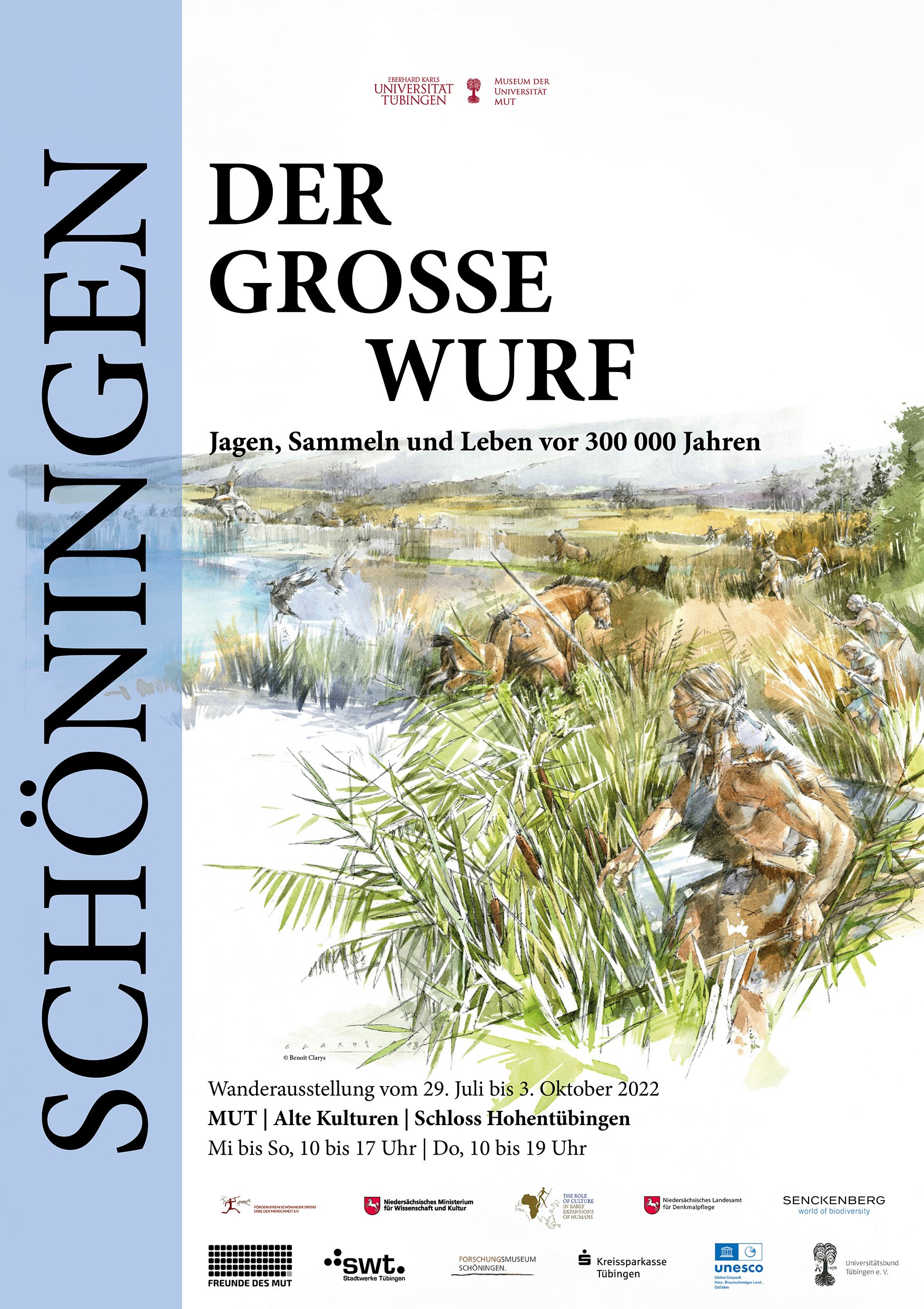
The archaeological site in Schöningen, Lower Saxony, provides important clues to the earliest settlement and cultural history of the people of Central Europe around 300,000 years ago. Since as early as 1994 excavations have been continuously taking place on the edge of an open pit mine. From 2016 onwards under the scientific direction of the Institute for Prehistory, Early History and Quaternary Ecology at the University of Tübingen, and since 2016 in cooperation with the Seckenberg Centre for Human Evolution and Palaeoenviroment. The excavations, some spectacular finds as well as research results are now shown in a traveling exhibition, which has its first stop at the Museum of the University of Tübingen MUT. It will be on display from July 29 to October 3, 2022.
The excellent preservation conditions on the shores of a lake at Schöningen and the many remains of early humans allow insights into the living environment of the now extinct Homo heidelbergensis. The famous Paleolithic Schöningen spears, considered to be the oldest completely preserved hunting weapons in the world, also come from this extraordinary archaeological archive. The new traveling exhibition provides insights into this bygone era through original finds, replicas, and drawings by artist Benoît Clarys.
Vernissage
The vernissage of the exhibition took place on July 28 at 7 pm in the Castle Church
PROGRAM
Greetings
Prof. Dr. Thilo Stehle
Dean of the Faculty of Mathematics and Natural Sciences of the University of Tübingen
Prof. Dr. Ernst Seidl
Director of the Museum of the University of Tübingen MUT
Prof. Dr. Klement Tockner
Director General of the Senckenberg Gesellschaft für Naturforschung
Lecture
Talk
Prof. Nicholas J. Conard PhD
Director of the Department of Early Prehistory and Quaternary Ecology
Guided tour through the exhibition
Dr. Jordi Serangeli
Head of excavation at the research station Schöningen
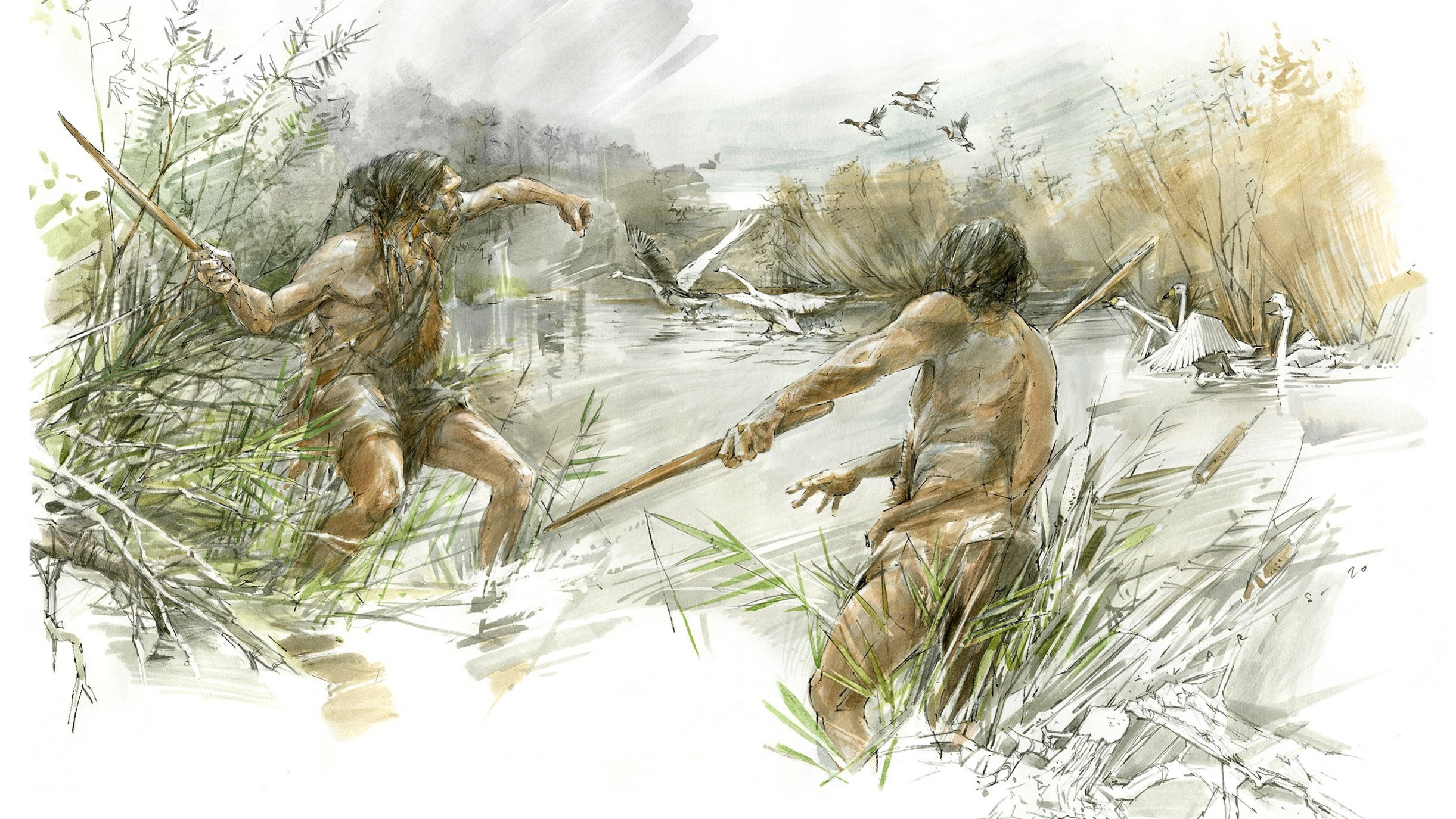
At the banks of the lake at Schöningen whooper swans were hunted with spears and throwing sticks. Reprint of a watercolor by Benoît Clarys (2020)
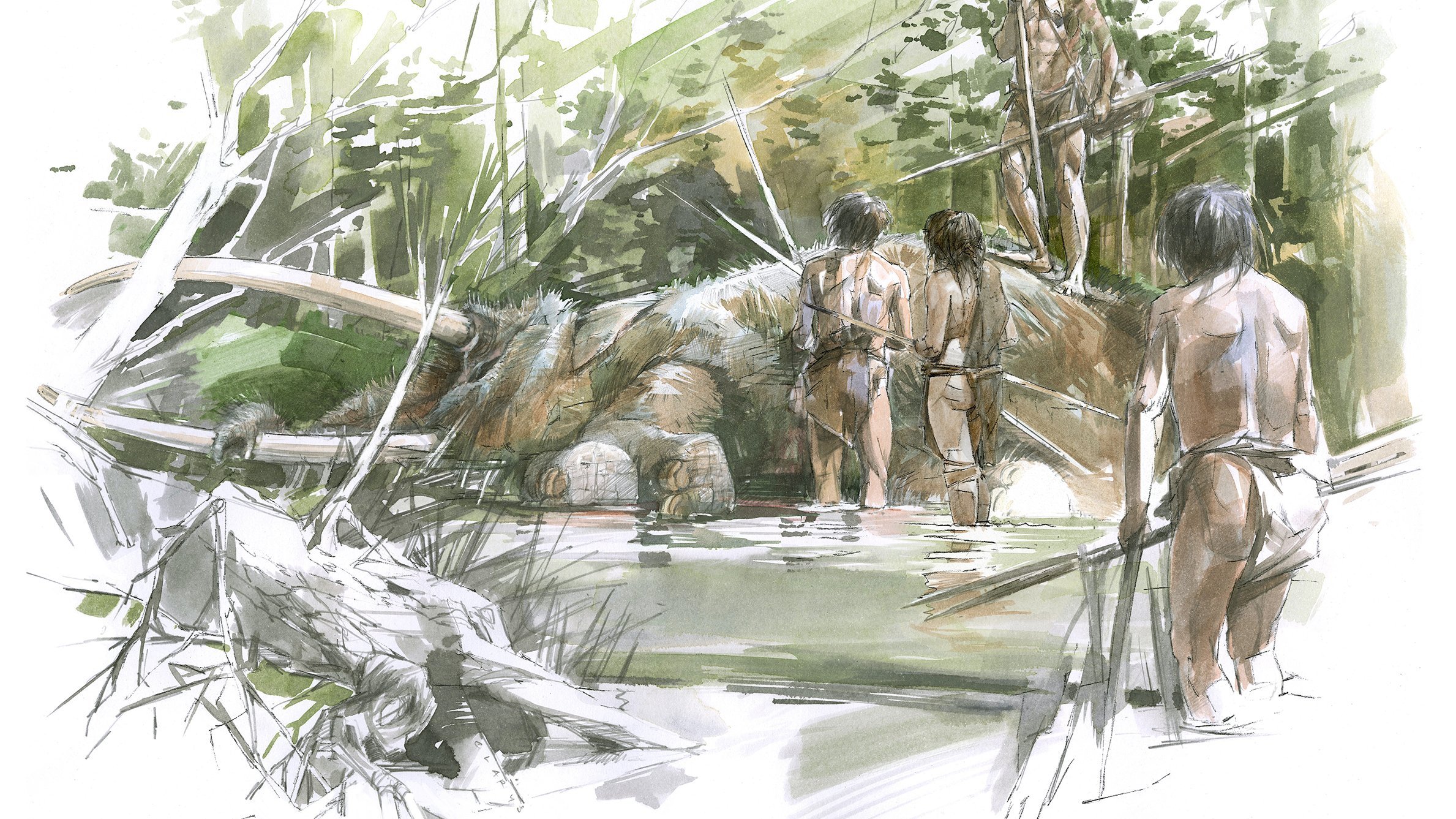
300,000 years ago humans discovered the cadaver of an elephant cow at the shores of the Schöningen lake and took it with them. Reprint of a watercolor by Benoît Clarys (2020)
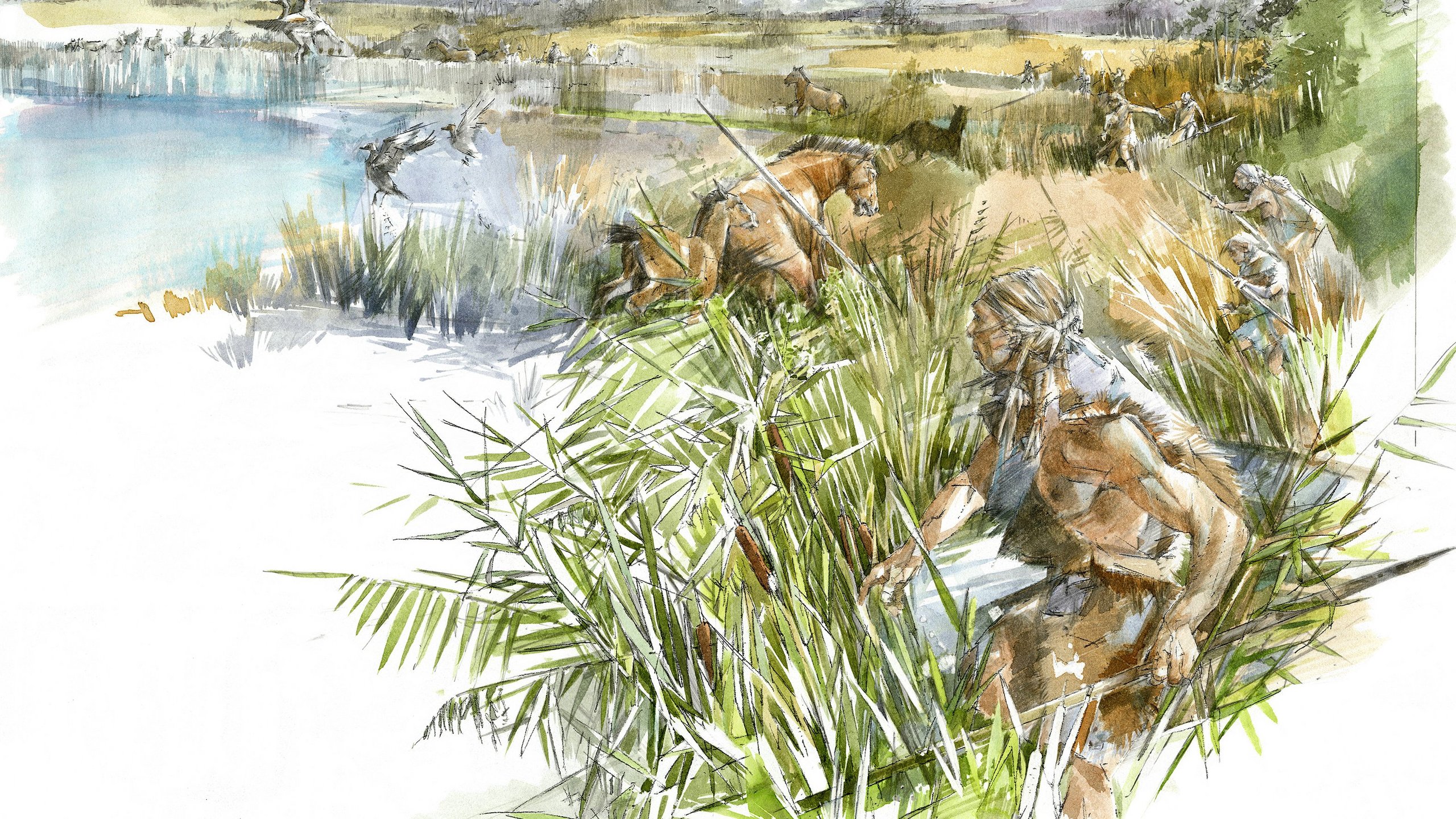
Even wildhorses were hunted with spears. Reprint of a watercolor by Benoît Clarys (2018)
What? When? Where?
Why are we the way we are? When did we become human beings? What do our Stone Age ancestors have in common with us and how do we differ? What did they eat? What animals and plants were there? What did the environment look like back then and what was the climate like?
In Schöningen, Lower Saxony, there is an archaeological site that plays an important role in answering all these questions. Ongoing excavations have been taking place there on the edge of an open pit mine since 1994. 300,000 years ago, the shore of a lake was located in the same place. The excellent preservation conditions and the many remains of this extraordinary archaeological archive allow a particularly detailed reconstruction of the living environment of the past.
The traveling exhibition provides insights into these bygone times by means of original finds or individual replicas as well as drawings by the artist Benoît Clarys and large-format visual material.
But it is not only about the past. Topics such as climate fluctuations, environmental changes, and the search for the true nature of humankind are fundamental questions that have rarely been as topical as they are today.
Humankind and culture

Like no other excavation site in the world, Schöningen with its excellently preserved findings provides us with profound insight into life around 300,000 years ago. Thanks to many years of excavations by the Lower Saxony State Office for the Preservation of Monuments in Hanover and the University of Tübingen, we know that Stone Age people repeatedly came to this site over a large period of time. Their presence is attested by more than 30 layers of findings including artifacts made of wood, stone, and bone. Those objects were created by representatives of late Homo heidelbergensis, the predecessor of Neanderthal man. A lance, spears, throwing sticks and a digging stick made of wood; scrapers, chipping stones, flint chipping stones, numerous tools made of bone as well as bones with traces of beating and working show us the variety of skills that our Paleolithic ancestors already possessed. For archaeologists, however, these objects are not just inanimate objects. They represent stories that have waited 300,000 years to be told. What did it mean for the development of humankind to have a spear and use it as a weapon? What do regular cut marks on bones mean? Were animals skinned? Were their bones used afterwards? What is the usage of a stone tool? Was it possible to dig up roots with it?
Humankind and evolution
Humankind not only possesses culture but is also part of nature. As such, like any other being, it is subject to the pressures of their environment. They adapt: culturally, technically and biologically. The upright walk is certainly a milestone in evolution. With their hands freed, our ancestors learned to make tools and use digging sticks and spears in hunting and gathering. They were able to secure a variety of food, and brain volume grew. But in the evolution of humankind, predators also played a special role. They were competitors and danger simultaneously—especially at night. The discovery of several bones and teeth of the saber-toothed cat, as well as of bears, wolves, and lions, proves that Stone Age people used weapons not only for hunting, but also for defense. Experiencing and fending off such a dangerous situation in a group strengthened the social bonds and cohesion of a group. The saber-toothed cat found in Schöningen was on average about the size of a modern lion or tiger. It reached a shoulder height of 0.9 to 1.1 m, a total length of 1.5 to 2 m and a weight of up to 200 kg.
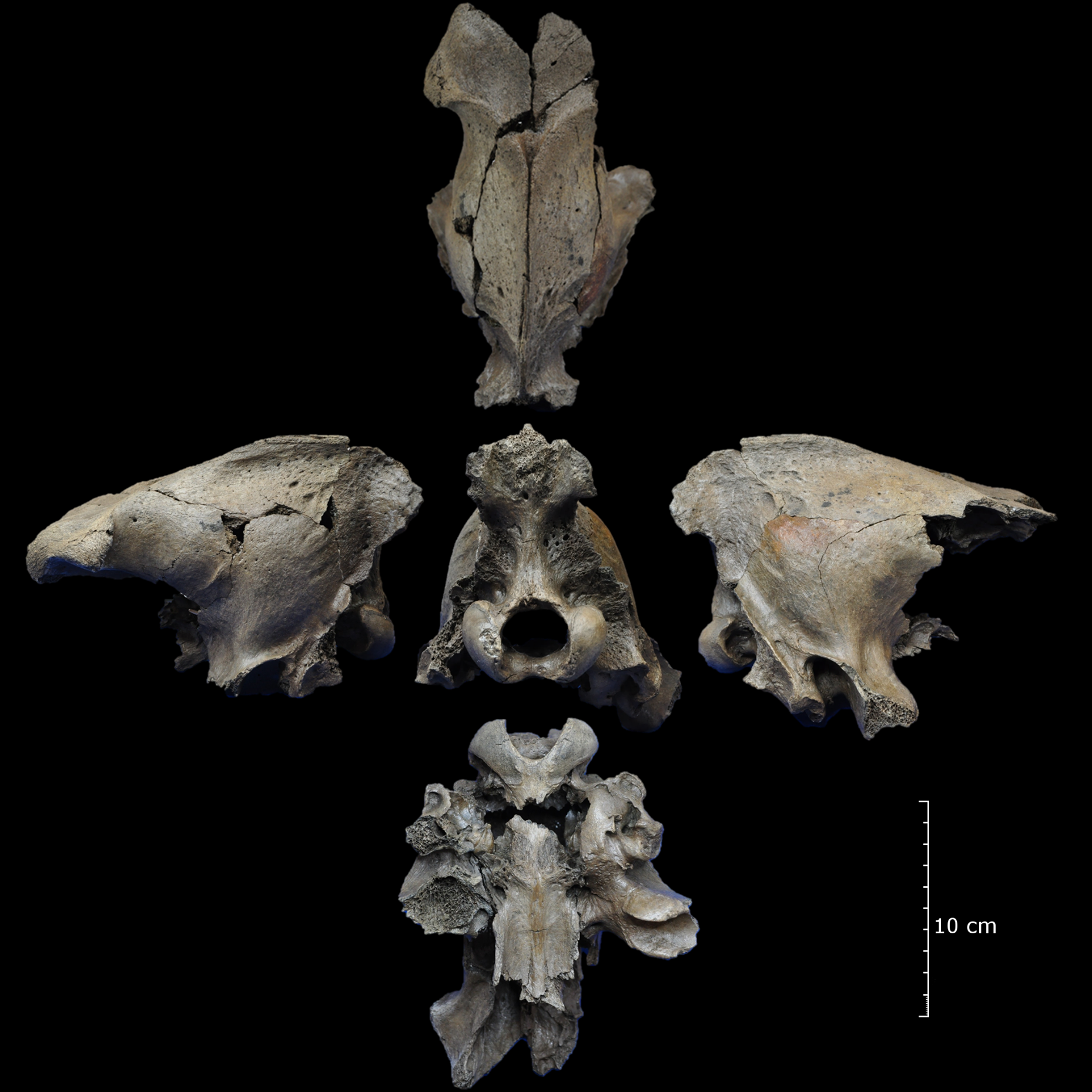
Humankind and the environment

Today, in Europe we are used to human-made environment consisting of fields, cities, roads and straightened rivers. In Germany, wilderness covers just 0.6% of the country's land area. This makes it difficult for us to imagine how the past really looked like. Vast landscapes with large animals such as elephants, rhinos, buffalos, or predatory cats, as seen in Africa or Asia today, seem rather unusual to us. About 300,000 years ago, however, such areas existed everywhere, including Germany. At that time, humankind had little influence on the landscape around them. The environment was determined by natural factors such as climate, topography, geology, and the animals living back then. Among the many wild animals discovered in Schöningen one deserves special attention: Nelly the elephant cow. From 2017 to 2020, her almost complete skeleton was discovered, excavated, and documented. She was surrounded by numerous artifacts made of stone or bone. These findings were evidence that humans had also been present. Since the elephant cow had been about 50 years old and her last molars were badly worn, it can be assumed that humans had utilized a naturally dead elephant in this case.
Opening hours
Wed to Sun 10am to 5pm
Thurs 10am to 7pm
Bookable offers
Want to book a guided tour or workshop?
Guided tours are also available outside of the usual opening hours.
Tel: +49 (0)7071 29 77579
send an e-mail
or fill out the following form: book a workshop or guided tour
Sponsoring






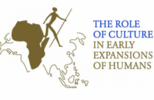

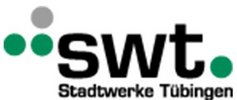

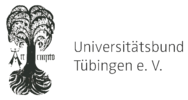
Exhibition venue
MUT | Ancient Cultures
Burgsteige 11
72070 Tübingen
Opening hours
Wed to Sun 10am to 5pm
Thurs 10am to 7pm
Admission
Adult: 5 €
Reduced: 3 € (children, students, retirees, disabled)
Family ticket: 12 €
Students of the University of Tübingen: free
Contact
Tel.: +49 (0)7071 29 77579


